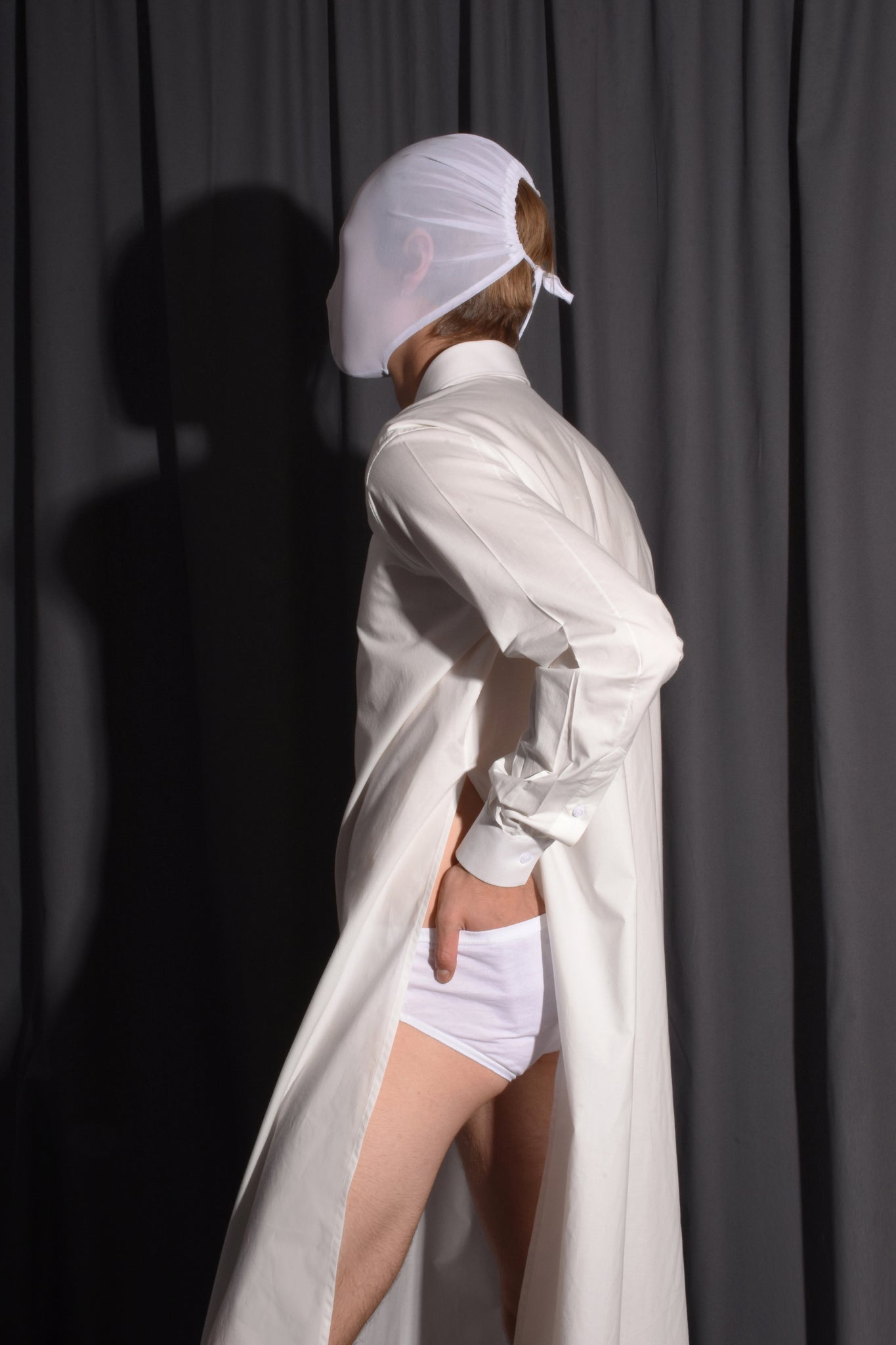
Code Blue
Code Blue is one of our four labels, it references and mandates a specific creative and production process we use at Emergency Room. Produced between our workshops in Beirut and Tripoli, the Code Blue collection can be broken down into three aspects; it’s our way of introducing new styles and cuts in our collection, it’s presented in a repetitive and standing color palette of black and white and it’s exclusively produced in natural fabrics (cotton, wool, silk or linen) that are sourced in local fabric stores. Because of all these production factors, it is our most accessible and affordable label.

2020 - Shot by Dunia Chahine
Why are all the products from Code Blue made using only natural fabrics?
Natural fabrics are made using natural fibers, which are produced by our eco-system and have been popularly used to create materials we’ve been using to dress and protect ourselves since as long as we’ve existed. Because these fibers are organic, they’re also biodegradable, which means that at the end of their life cycle, instead of releasing toxic chemicals, they decompose organically, which doesn’t harm the environment as per our committed ideals towards an environmentally conscious production of clothing.

2020 - Shot by Dunia Chahine
What makes the fabrics in Code Blue all natural?
Cotton: Basic cotton is made from balls of cotton, produced by cotton plants, which are cleansed from dirt to go through a spinning process that turns them into yarn and thread, only to then be woven or knitted into fabric, like jersey which we use to make stretchy t-shirts, poplin that is used to create shirts or gabardine which is used to produce sturdy pants.
Wool: Wool is a very warm and insulating fabric. It’s your best ally through the entirety of the winter season and stems from the natural coatings of animals, such as sheep and goats. These natural strands of hair are spun into yarn, washed and woven into fabric. We mainly use this material to produce our jackets and coats.
Silk: Silk is the most luxurious fabric that falls into the natural fiber branch. It’s produced when certain insect larvae called silkworms, enter the pupal phase and create silk cocoons that are harvested and boiled to extract the silk threads from the cocoon. After that, the thread goes through a spinning process to obtain meters of silk, which can be used to design shirts, blouse, skirts and dresses.
Linen: This textile originates from the flax plant and once the stems of the plant are yellow and the seeds are brown, they are harvested and the leaves and seeds are separated from the stalks. The stalks are then broken up to make use of their inner fibers which are then combed and spun into yarn. The yarn is then treated and dyed and made into linen fabric to produce shirts, pants or dresses.

2020 - Shot by Dunia Chahine
Why not synthetic fibers?
The production of synthetic fabrics, such as nylon, polyester, fake leather, etc. are hazardous to our global environment because of all the chemical and plastic based processes used to produce such materials.
Artificial dyes, petroleum and many other chemical substances came into play in the fashion industry and are to this day damaging our eco-system with polluting aftereffects of carbon emissions that contribute to global warming. Furthermore, these materials are also much more harmful at the end of their life cycle because they are not biodegradable. Polyester alone will not decompose for 20 years at best and 200 years at worst, depending on conditions.
Production of clothing used to be limited, only a couple of years ago, to natural fibers, mainly using cotton and wool. But to satisfy an ever-increasing demand for cheap clothes, that nature’s fiber supply couldn’t keep up with, fast fashion companies turned towards synthetic materials, pursuing the development of artificial fabrics, feeding a system that is today very hard to slow down.
Scroll further for pictures of Code Blue items through the years.

2018 - Shot by Ghida Ladkani

2018 - Shot by Rayan Chehab

2018 - Shot by Rayan Chehab

2019 - Shot by Aly Saab

2019 - Shot by Dunia Chahine

2019 - Shot by Aly Saab


